The Fruits of Schism – Part 1 and Part 2
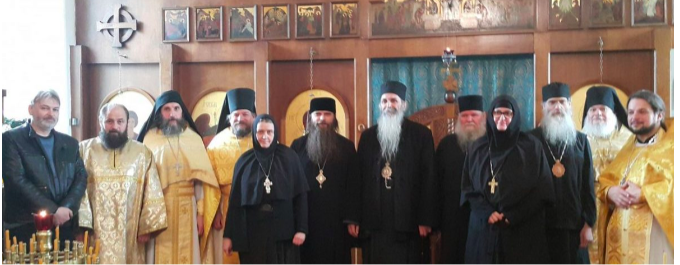
Part 2 of The Fruits of Schism Part 2 has now been published. Read it here together with Part 1
Fruits of Schism I & 2, Final Version 3
THE FRUITS OF SCHISM
Part One & Part Two
Protopresbyter Victor Melehov June, 2019
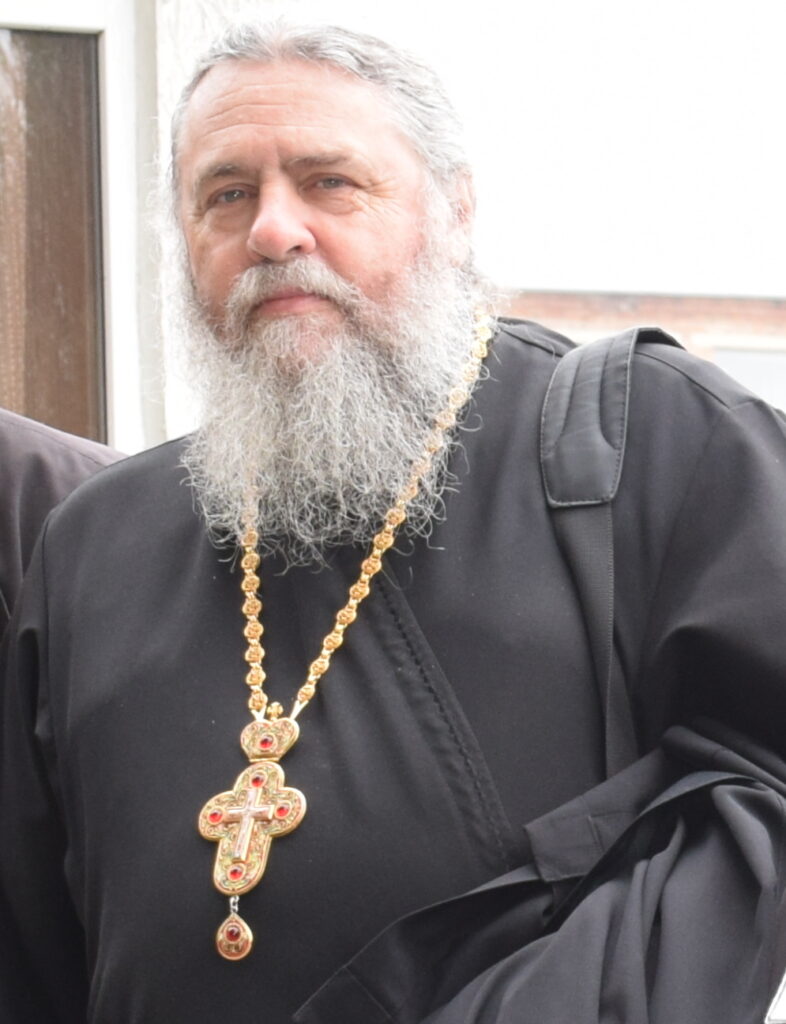
The Fruits of a Schism
Part I
Last month (October, 2018), the Agafangel Synod deposed two of its bishops (Archbishop Andronik of Canada, and Archbishop Sophroni of St. Petersburg, Russia), and summoned the suspended Abbot Andrei (Erastov) from Australia. Why is this important to the Orthodox Faithful? Because the kaleidoscopic deceit of this synod continues to spin even beyond the boundaries of its own control.
To bring some clarity to this confused and fog-bound “circus,” I have written this brief chronology of pertinent events before and after the fall of the ROCOR into union with the Moscow Patriarchate (MP):
– Shortly after his ordination in 1994, the young Bishop Agafangel displayed his ignorance of Orthodox ecclesiology by publishing an article proclaiming the validity of sacraments outside of the Church:
“…the Grace of the Holy Spirit, the Grace of the Sacraments, resides also with the Catholics, Monophysites, and in part, with Old Believers and Protestants who have not violated the formula in performing the sacraments (baptism). The Orthodox Church does not re-baptize those who come from these heresies, but receives them through repentance. Catholics and Monophysites are not chrismated a second time. The Sacrament of Marriage is also accepted. In the Moscow Patriarchate, there are six Sacraments which have been preserved and are recognized as valid – baptism, chrismation, the priesthood, marriage, unction, repentance.”
(Bishop Aganfangel Pashkovsky, Vestnik TOC, No. 2, 1994, pg. 30)
– Assigned by the ROCOR Synod to the Ukraine (where he was born in Odessa), Bishop Agafangel worked alongside Archbishop Lazar of Odessa and Tambov (who ordained him) until 2001.
– In 2001, Metropolitan Vitaly was forced to resign by the ROCOR Synod, led by the new Metropolitan Laurus, who had a firm intention to join the Moscow Patriarchate (MP)
– Almost immediately, Met. Vitaly came out of retirement with the intent of opposing any union with the MP. Archbishop Lazar and Archbishop Benjamin (of Chernomorsk & Kuban) declared their support for Met. Vitaly, and after the First Voronezh Conference of the Russian clergy, sent Bishop Agafangel to the Synod in New York instructing him to present their protest, signed by the bishops, clergy and participants of this Conference.
– Arriving in New York, Bishop Agafangel betrayed the will of his fellow bishops and all the Russian clergy, and announced his own support of the newly elected Met. Laurus.
– Archbishop Lazar and Archbishop Benjamin soon separated from the Synod of Met. Laurus 1
for reasons of Faith; the result of their rejection of the Sergianism and Ecumenism of the MP. They began ordaining bishops for their RTOC Synod (including the present Archbishop Tikhon and Bishop Germogen), which they were obliged to do according to the canons of the Church; appointing worthy candidates to widowed Russian cathedras.
– In 2007, Met. Laurus completed his stated mission by bringing the entire ROCOR under the jurisdiction of the MP, thereby betraying the century-long witness of Faith of the ROCOR and the persecuted Russian Church in the catacombs.
– Just prior to Met. Laurus’ betrayal in 2007, Bishop Agafangel announced that he agreed with joining the MP, but at that point in time it was “still too early.” Following this announcement, Bishop Agafangel issued a false proclamation regarding his secession from the Synod of Met. Laurus, signed by Bishop Daniel (of Erie, PA) and Bishop Agafangel. However, after two weeks Bishop Daniel dissociated himself from this appeal, saying that he remains with the Synod of Met. Laurus and does not wish to create a schism.
Then, Bishop Agafangel began to form his own synod – ROCOR(A). Collecting the remaining parishes reluctant to follow Met. Laurus, Bishop Agafangel refused the offer of his former brother bishops of the RTOC to help restore the episcopate abroad, stating that anyone who left ROCOR (because of its path to the MP), before he himself left the Synod of Laurus, was a schismatic. Having made such a frivolous statement, Bishop Agafangel apparently overlooked the fact that he was thereby calling Metropolitan Vitaly a schismatic also. Met. Vitaly left his former brother bishops-betrayers in 2001.
– Bishop Agafangel appealed to the Greek Cyprianite Synod (the Synod in Resistance). The Cyprianite Synod was deposed by the True Greek Orthodox Church (TGOC) under Archbishop Chrysostom (Kousis) for creating a schism in the TGOC and for their heretical ecclesiology (Cyprianism – confessing that the Mother/World Orthodox Church was ailing, but still valid).
– Bishop Agafangel succeeded in convincing the Greek Cyprianites to ordain with him a synod of bishops for his new jurisdiction (ROCOR(A)). Lacking any understanding of his own ecclesiology, Bishop Agafangel announced that he too is a Cyprianite. Thus, he and every bishop of his new synod came under the Anathema Against Ecumenism declared by the 1983 ROCOR Sobor under the direction and guidance of the Holy Hierarch Philaret (3rd Metropolitan of ROCOR). In such a manner, the Agafangel Synod: 1) anathematized itself from its very beginning, 2) made itself uncanonical through its invalid ordinations by deposed Greek bishops, 3) became heretical through its proclaimed Cyprianite ecclesiology, and 4) became schismatic because of its rejection to recognize and join their brother bishops in the Russian Church.
– Shortly thereafter, under controversial circumstances, Bishop Agafangel became Metropolitan of his newly created ROCOR(A). He expanded his synod and jurisdiction through receiving bishops and clergy of dubious ecclesiology (i.e., from the Gennady-Sekachov sect to the MP). The need to establish an Orthodox ecclesiology was never seriously addressed, or perhaps even understood. Thus, under such circumstances, the hieromonks Andronik and Sophroni became “Archbishops” of this organization.
2
– As usual, one schism breeds another. Soon, Archbishops Andronik and Sophroni left Agafangel’s synod for reasons of administrative disagreements (i.e., not for canonical matters of Faith). Almost simultaneously, Bishop Stefan (Sabelnik) left the RTOC Synod for similar reasons of administrative disagreements. All three bishops were suspended and retired by their respective synods for such uncanonical actions.
– Claiming to be preparing their new “church” for the “last times,” all three bishops ignored their respective synods’ decisions to suspend and retire them, and proceeded to form a “quasi synod” with no particular administration. Of course, they too claimed to be the continuation of ROCOR.
– The first major decision of this quasi synod (or The ROCOR of the Last Days) was to make the suspended Abbot Andrei Erastov a bishop. As absurd as this new schismatic organization is, what is more astounding is that Abbot Andrei agreed to such a ridiculous ordination. Of course, Abbot Andrei was also a clergyman of the Agafangel Synod.
– Subsequently, all three bishops were deposed by their respective synods. All three bishops were reduced to the status of “simple monk.” The monk Stefan (Sabelnik) died this past year.
– The suspended Abbot Andrei Erastov has been summoned to appear before the Agafangel Synod, apparently to be given a chance to explain himself and repent. Meanwhile, he has been actively parading about Australia pretending to be a bishop, and creating confusion and discord among the faithful.
Of course, almost every paragraph above could be expanded into a topic of its own. Indeed, there are more actions and details which serve to further detract from the legitimacy of this synod. Suffice it for now to simply conclude from the above, that from Agafangel to Andrei, such a delusional kaleidoscope of ecclesiology and actions could seriously harm the spiritual life of the faithful. Hence, the need for this brief summary of its history.
To complete this commentary on a lighter note, one might imagine, keeping in mind all of the above, that people amongst the Orthodox might now begin to ask: How many simple monks, who had an episcopal rank, but could not keep it, does it take to transform a suspended abbot into a bishop?
Protopresbyter Victor Melehov November, 2018
3
The Fruits of a Schism
Part II
No sooner had “The Fruits of a Schism” (Part I) been completed, where it was explained that suspended and retired bishops cannot make a suspended abbot a bishop, when the very same collection of characters were meeting at the Lesna Monastery in France, planning their next “brilliant achievement” – an expanded synod of schismatics. (As reported on the sites of PortalCredo and NFTU)
The theme here is that one schism only leads to more schism. To build a union that is good and lasting upon a solid foundation takes wisdom, an uncompromising canonical will, an Orthodox ecclesiology, and the Grace and Will of God. To unite on the weak principles of one’s own varied desires, without an Orthodox ecclesiology, while disregarding the Holy Canons and pretending to proclaim God’s Will, may only lead to more of the same – schism. What we see forming at this recent Lesna convention is a compounded collection of schismatics, each spinning his own rhetoric of acceptance for the other’s questionable background and uncanonical maneuvers, each contradicting his previous position, all in order to reach an arrangement of mutual benefit.
Regardless of their endless attempts to serve their own misguided self-interests, the truth remains: Whenever clergymen warp ecclesiology and bend the Holy Canons to suit their needs, the result is not good for anyone. We see this theme recurring throughout ancient times on both small and large scales (from small local heresies to the fall of the Church of Rome). We see this theme continuing in our own days, even in an accelerated fashion (the fall of ROCOR, subjugating itself to its own nemesis – the Moscow Patriarchate, HOCNA falling into Name Worshipping, Agafangel joining the Cyprianites, TGOC uniting with Cyprianism, albeit through a veil of cleverly crafted non-statements, etc.. And now, with this gathering of compromised individuals with their self-serving interests, we again witness their kaleidoscopic deceit spinning beyond the boundaries of their control, much to the evil one’s delight.
Harsh words? Perhaps. Yet, what is at stake here? These clergymen, arrayed in serious vestments, which call for respect and trust, appear to hold the keys to salvation for the flock. Yet, their words and actions only lead to the creation of para-synagogues. They discredit and slander those who stand for the Faith, while pretending to stay the “course of the golden center” – their own creation of compromise. If no one speaks out against such spiritual deception, then, as our Saviour says, “the very stones will cry out.” (Luke 19:40)
First, let us briefly look at how these individuals arrived at this intersection of their mutual malaise, and then we will analyze their attempt at common ground as they try to rationalize their lack of canonicity.
The Lesna Monastery left Metropolitan Laurus and the ROCOR at the point of its union with the Moscow Patriarchate (2007). The Monastery applied to be received into the jurisdiction of the Russian True Orthodox Church with the stipulation that it be given stavropegial status, directly
4
under Archbishop Tikhon. Given the age of Abbess Makrina, Mother Evfrosinia conducted the negotiations, as she continues to do even to this day. The RTOC received the Monastery as requested, with its current clergy, et al. As time passed, Archbishop Tikhon and the other RTOC bishops visited regularly. Eventually, Archbishop Tikhon awarded Abbess Makrina with a second pectoral cross. Then, he appointed Mother Evfrosinia as Dean of the Monastery and awarded her with a pectoral cross, thereby giving Mother Evfrosinia more administrative authority in assisting the aging Abbess. At the Monastery’s request, priests were ordained and appointed to serve the Monastery. Whenever the Monastery asked to invite bishops and clergy from the Serbian True Orthodox Church (STOC) for any reason, Archbishop Tikhon always gladly agreed. As the sister-church to the RTOC, the bishops of the Serbian Church performed ordinations at the Monastery for the RTOC. RTOC clergy and laity from all parts of the world would visit the Monastery for pilgrimages and retreats.
Then, much to the surprise of many, Mother Evfrosinia wrote a letter to the Secretary of the RTOC Synod, requesting a canonical release of the Monastery to the Serbian True Orthodox Church (STOC) under Bishop Akakije. In this letter, Mother Evfrosinia admitted to not having any canonical reason to request such a release. Yet, she requested the Secretary to convince the Synod of Bishops to grant it nonetheless.
On September 10, 2016, Mother Evfrosinia wrote:
Fr. Victor, I implore you to do what you can to convince Vl. Tikhon to let us go quietly and peacefully. I realize that we do not have serious canonical reasons to leave, nor are their profound ecclesiological or theological differences between what we believe and the stance that the Synod is taking in all the recent disputes.
Отец Виктор, я умоляю Вас сделать все, что в Ваших силах, для того чтобы убедить Вл. Тихона отпустить нас тихо и мирно. Я понимаю, что у нас нет серьёзных канонических причин чтобы уйти, также нет глубоких экклезиологических или богословских разногласий по тому, как мы верим, и по позиции которую занял Синод в последних спорах.
After carefully considering this petition, the RTOC Synod of Bishops denied Mother Evfrosinia’s request. Ignoring this decision, the Lesna Monastery, for no canonical reason, and with no canonical release, petitioned Bishop Akakije (of the STOC) to be received under his omophor. Shortly thereafter, the following was published on the Lesna website:
Statement
In view of the obvious disorganization of the administration of the Synod of the RTOC and the deviation from the canonical line of the Russian Church Abroad of the memorable Metropolitans Anthony, Anastasia, St. Philaret and Vitaly, as well as ukazes and actions aimed at the destruction of church life, we declare our withdrawal from the aforementioned administration and our transition to the omophor of the Serbian True Orthodox Church from October 27 / November 9, 2016.
Provemont, 8/21.11.2016г.
Association Cultuelle Orthodoxe Russe de Notre Dame de Lesna
Monastère Lesna
1, rue du Moulin
27150 Chauvincourt-Provemont
5
Memory of the Holy Archangel Michael and All the Heavenly Powers The day of the repose of St. Philaret of New York
Свято-Богородицкий Леснинский монастырь
Association Cultuelle Orthodoxe Russe de Notre Dame de Lesna
Monastère Lesna
1, rue du Moulin
27150 Chauvincourt-Provemont
France
(33) 0232558266
lesna@orange.fr
Sadly, here we see the turning point – the first steps of a schism. While admitting they have no canonical reason, and that there are no “profound ecclesiological or theological differences,” the Lesna Monastery leaves its canonical synod in order to achieve that which it desires, at any cost. In attempting to justify its departure, the Lesna Monastery even tries to sully the reputation of the very synod which took the Monastery under its omophor. Indeed, that same synod which served to fulfill the Monastery’s every need and desire. The Monastery states: “In view of the obvious disorganization of the administration of the Synod of the RTOC and the deviation from the canonical line of the Russian Church Abroad of the memorable Metropolitans Anthony, Anastasia, St. Philaret and Vitaly, as well as ukazes and actions aimed at the destruction of church life…” What “disorganization and deviation?” What “ukazes and actions aimed at the destruction of church life?” These could be serious canonical transgressions. Yet without any substantive proof, this is slander at best. Does the Monastery realize its responsibility for leaving its rightful and ruling bishop, splitting the Church and leading away its flock from unity within the Church, for creating a schism, for “no canonical reason,” and no “profound ecclesiological or theological differences?”
Here, it must be noted that Bishop Akakije, while still an heiromonk, petitioned the Synod of Bishops of the RTOC to consecrate him as Bishop for Serbia, thereby reinstating the True Orthodox Church of Serbia. The Synod of Bishops agreed, and consecrated Bishop Akakije and Bishop Nectary as bishops for the Church of Serbia. In this manner, the RTOC and the STOC became sister-churches in full communion with each other.
Upon receiving the above petition from the Lesna Monastery, Bishop Akakije accepted the Monastery under his omophor. Of course, this surprised and disappointed Bishop Akakije’s brother bishops of the RTOC. Without any inquiry or communication (not even a phone call) to the bishops of the RTOC, Bishop Akakije received the Lesna Monastery under his omophor for no canonical reason whatsoever.
6
Here is Bishop Akakije’s and Bishop Nektari’s “Decision:”
SERBIAN TRUE ORTHODOX CHURCH. Council of Bishops of the Serbian True Orthodox Church
27 Oct. / 9 Nov. 2016 Holy Martyr Nestor
Reverend Mother Macrina, Abbess of the Holy Mother of God Lesna Monastery Very Reverend Archimandrite Evfymi Reverend nun Evfrosinia
DECISION
Taking into account the very difficult situation in which the Lesna Monastery and its mission has found itself in, as well as bearing in mind the condition of the Synod of the RTOC — its new course, in which we no longer recognize the RTOC, with which we happily became acquainted in 2008 and from which we received brotherly help in the form of a bishop’s consecration in 2011 – we responsibly make the decision to temporarily accept the Holy Mother of God Lesna Monastery and its Western European mission under our hierarchical omophor, hoping that the situation in the RTOC will be normalized.
We ask you to meet as soon as possible in order to come to an agreement regarding our future cooperation, and to adopt a common position regarding the new ideology which appeared in the RТОC with the arrival of Fr. Victor Melehov to the position of Secretary of the Synod.
+ Akakije, Bishop of Uteshitelev, Chairman of the STOC Council of Bishops + Nectari, Bishop of Sumadi
The two bishops write how they have taken “into account the very difficult situation in which the Lesna Monastery and its mission find itself.” They write of the “new course” taken by the RTOC, and how they can “no longer recognize the RTOC.” They speak of the “new ideology which appeared in the RTOC with the arrival of Fr. Victor Melehov.” And, in the same breath (perhaps so that they might not appear to be ungrateful), they thank the RTOC for consecrating both of them to the rank of bishop in 2011. Yet, neither the Lesna Monastery, nor the two bishops, even site one canon justifying their actions. Nowhere do they attempt to describe this “difficult situation,” the “new course,” the “new ideology.” To leave a synod or a bishop, or for a sister synod (in communion) to annex a monastery and diocese, requires serious transgressions followed by serious accusations. Did the RTOC Synod preach heresy? Did it suddenly become uncanonical? To the contrary, the RTOC has held two sobors to date – 2008 and 2017. The both sobors clearly stated RTOC’s ecclesiology. The latter sobor upheld the former sobor’s statements of faith and decisions. This is clearly documented on its website. The RTOC Synod does not recognize the Moscow Patriarchate as the Church of Christ. It stands by the Anathema Against Ecumenism (1983). It recognizes Cyprianism as a heresy founded upon Ecumenism. This is a continuation of the same ecclesiology set forth by our Holy Hierarch and Confessor, Metropolitan Philaret of New York, which was further defined and embraced by Metropolitan Vitaly. So, where is the “new course” and “new ideology?”
Later, while completely ignoring the RTOC Synod of Bishops, Bishop Nectary of the STOC ordained a priest for Ukraine, stating that he had permission from the suspended, retired and
7
defrocked former Bishop Stefan of Trenton, New Jersey, USA. More recently, Bishop Akakije received a group of clergy in the Omsk, Siberia, area, who had been defrocked by the RTOC several years ago for their schism with the Synod of Bishops based upon their acceptance of the heresy of Cyprianism. Although Bishop Akakije and Bishop Nectary clearly recognize their own ordination and territorial authority granted to them by the RTOC Synod of Bishops, they have ceased to recognize authority, territorial and otherwise, of the RTOC. Is this not already a schism?
Without providing a canonical reason, along with the necessary proof, the clergy and monastics leaving the RTOC, and the bishops receiving them without a canonical release create a dreadful division in the Church. This is called a schism – a very serious transgression.
Causing divisions in the Church is no lesser evil than falling into heresies… the sin of schism isn’t washed away even by blood of martyrdom. (St. John Chrysostom, Exegesis of the Epistle to Ephesians)
Now, what we see is how one schism, regardless of size, leads to another schism. With no canonical release, Lesna Monastery’s departure from the RTOC to the STOC can only be considered uncanonical and schismatic. With no canonical release from the RTOC, Lesna Monastery’s reception by Bishop Akakije into the STOC was similarly uncanonical and schismatic. After these steps, the subsequent uncanonical actions begin to multiply in number and severity.
More recently, the Lesna Monastery played host to a convention of uncanonical schismatics. As we see from the published photograph (below), the collection consisted of the following:
- – The suspended, retired and defrocked former Archbishop, and now simple monk, Andronik.
- – The suspended, retired and defrocked former Archbishop, and now simple monk, Sophroni.
- – The suspended abbot Andrei, now posing as a bishop who was “consecrated” by the suspended, retired and defrocked former Archbishop, and now simple monk, Andronik, and by the suspended, retired and defrocked former Archbishop, and now simple monk, Sophroni, with the consent of the suspended, retired and defrocked Bishop, who died last year as a simple monk, Stefan. (An additional note: monk Andronik, monk Sophroni, and suspended abbot Andrei were all members of the schismatic synod of Bishop Agafangel, who consecrated the two archbishops together with Cyprianite bishops, who were all defrocked by the TGOC – the Synod of Archbishops Auxentios and Chrysostom. Furthermore, the Agafangel Synod, which included the above two former archbishops, did not recognize the RTOC Synod, and proclaimed it to be uncanonical, without, of course, providing any canonical reason.)
- – The STOC Bishops Akakije and Nectari (along with the former bishop, Stefan) did not recognize the canonicity of the Agafangel Synod, which included the former Archbishops Andronik and Sophroni, because: 1. Bishop Agafangel created a schism in the Russian Church by joining with the Greek Cyprian Synod. 2. By uniting with the defrocked Cyprian Synod, Bishop Agafangel created his own uncanonical synod with an interrupted Apostolic Succession. (An additional note: The STOC bishops received the Lesna
8
Monastery without a canonical release from the ROTC Synod, with whom they were in full communion. They also accepted former Russian clergy defrocked by the RTOC Synod, and allowed them to continue to serve in areas under RTOC jurisdiction. These clergymen were defrocked for their heresy – they espoused Cyprianism and recognized the validity of the Moscow Patriarchate. In doing so, the STOC Bishops Akakije and Nectari committed serious uncanonical acts, and harbored, and accepted heresy.)
- – Abbess Evfrosinia of the STOC.
-
– Mother Evfrosinia, Dean of the Lesna Monastery, along with clergy faithful to the Lesna
Monastery.
Gathering at the Lesna Monastery, this convention of schismatics developed a “Joint Statement.”
The first paragraph reveals their confusion. The second paragraph unveils the schismatic essence
of their spirit.
“Discussions were held in Paris, 9-10 November 2018, between delegations of representatives of
the Russian True Orthodox Church (RTOC), (that part of the church which is no longer
subordinate to the Synod of Archbishop Tikhon of Omsk and Siberia and is temporarily under the
omophor of the Serbian True Orthodox Church) and the Russian Orthodox Church Abroad
(ROCA) under the chairmanship of Archbishop Andronik (church groups that are no longer
subordinate to the Synod of Metropolitan Agafangel)…”
“It should be noted that both of the parties in these discussions, among other reasons, have
separated themselves from their hierarchy because of the latter’s isolationist policies and
consistent refusal to undertake any steps toward establishing the unity that is desired by all.”
Is this a reason to leave one’s respective hierarchy? Is there a canon regarding “isolationist
policies?” Is that a heresy? It sound much more like a secular political statement, rather than a
church ecclesiology. Nonetheless, this begs the ironic commentary:
“Through schism – unity!”
Or,
“Schismatics of all splinters – unite!” Is this not hypocracy? (Published by Portal Credo & NFTU websites) 9
JOINT STATEMENT OF THE DELEGATIONS OF THE STOC AND THE ROCA
Discussions were held in Paris, 9-10 November 2018, between delegations of representatives of the Russian True Orthodox Church (RTOC), (that part of the church which is no longer subordinate to the Synod of Archbishop Tikhon of Omsk and Siberia and is temporarily under the omophor of the Serbian True Orthodox Church) and the Russian Orthodox Church Abroad (ROCA) under the chairmanship of Archbishop Andronik (church groups that are no longer subordinate to the Synod of Metropolitan Agafangel). Bishop Akakije, the leader of the Serbian True Orthodox Church (STOC) was present as a mediator. The purpose of the negotiations was to examine the possibility of establishing Eucharistic communion between our Churches.
It should be noted that both of the parties in these discussions, among other reasons, have separated themselves from their hierarchy because of the latter’s isolationist policies and consistent refusal to undertake any steps toward establishing the unity that is desired by all.
At the beginning of the meeting, the bishops related their biographies to each other. Then both delegations had the opportunity to ask questions of the opposite side. Members of the delegation of Abp. Andronik asked Bp. Akakije to explain the practice of re-baptizing those who join his jurisdiction from the Belgrade Patriarchate. Bp. Akakije related that when he was a hieromonk in the Greek GOC Synod of Archbishop Chrysostomos, in accordance with the practice of that synod, he was obliged to accept through re-baptism those who had not been baptized with three immersions. In the Belgrade Patriarchate very few baptize correctly through a triple immersion. Bp. Akakije in his jurisdiction currently adheres to a more reasonable pastoral approach when receiving converts from the official churches.
(Author’s Note: Interesting to know what B. Akakije considers to be a “more reasonable pastoral approach.”)
A question was also asked about the circumstances of the episcopal consecration of Bp. Akakije. Bp. Akakije accepted consecration from the Synod of the RTOC, without the blessing of the Greek GOC Synod, to which he belonged as a hieromonk. Bp. Akakije explained that he had to take this step, because the continued presence of the Serbian True Orthodox Church under the Greek omophor impeded the church’s missionary activity in Serbia. The Greeks had for many years refused to consecrate a bishop for the Serbian Church. In addition, the Serbian Church has been an autocephalous church from the time of St. Sava and the Synod in Athens did not have the right to keep the Serbian diocese under its subordination.
All of the participants in the discussions recognize the canonicity and authenticity of the episcopal consecrations of the STOC and of the ROCA. The Synod of Met. Agafangel had earlier declared the RTOC, who consecrated Bp. Akakije, to not be a canonical church. At that time Abp. Andronik and Abp. Sofroniy belonged to the Synod of Met. Agafangel and had signed this decision. They both now recognize the fallacy of that decision, regret having affixed their signatures to it, and disavow the decision.

10
(Author’s Note: So, when advantageous, one can deny one’s signature? In this manner, without giving it much thought, the also deny their own ordination. And, what exactly was that “fallacy”? If the RTOC is canonical, then the Agafangel Synod cannot be canonical.)
They also acknowledge the error of the 2007 refusal of the Provisional Supreme Ecclesiastical Authority (PSEA), under then Bp. Agafangel, to enter into talks with the RTOC Synod on the issue of unification and the future joint consecration of bishops for the ROCA. As we know, Bp. Agafangel refused the RTOC proposal to join their Synod and began to create his own jurisdiction, turning to the Synod in Resistance to perform consecrations. This deepened the divisions in the Russian Church and had as a consequence the adoption of the above- mentioned decision that the RTOC was “without grace.”
(Author’s Note: So, might this be a position of “isolationism”? Then, in other words, B. Agafangel created a schism in the Russian Church, and then created his own para-synagogue with Greek bishops deposed by their own former synod, the TGOC. So, who is without grace?)
Bishop Akakije recognizes the consecrations of Met. Agafangel’s group as canonical. He had previously viewed these consecrations as not canonical, because he considered the source of these consecrations, the Synod in Resistance, to be a schismatic group that had been defrocked of episcopal rank by the Greek GOC Synod led by Archbishop Chrysostomos II. At this time, Bp. Akakije is of the view that the non-canonical position of Met. Agafangel’s group has been corrected through the union of the Synod in Resistance with the Greek GOC in 2014.
(Author’s Note: And so, who is that has changed his course? Who is it that is un- recognizable? Furthermore, B. Akakije still has not been able to explain how this happened, given that the Cyprianites, the Synod In Resistance, deny that any such correction took place.)
The ROCA delegation asked about the canonical position of the group of priests in Omsk. After the death of Bp. Stefan (Sabelnik), the Omsk priests, with his blessing, began to commemorate Bp. Akakije. Bp. Akakije explained that he agreed to be commemorated by priests in Russia and in Ukraine, because Bp. Stefan had provided his blessing for this. Bp. Akakije does not wish to extend his jurisdiction onto the canonical territory of the Russian Church. He considers the current commemoration to be temporary while the canonical status of the Omsk group is resolved.
(Author’s Note: The Omsk and Ukraine clergy were deposed by their canonical Synod (RTOC) for their professed heresy – Sergianism and Cyprianism/Ecumenism, and for creating a schism. The former Bishop Stefan was deposed for accepting deposed clergy, uniting with retired, suspended and deposed former schismatic Agafangel “bishops” Andronik and Sophroni. He also began to preach against the Dogma of the Church. And now, B. Akakije magnanimously comes to everyone’s rescue?)
Clerics in Russia and Ukraine who commemorate Bp. Akakije are considered to be clerics (as they were previously) of the RTOC, who retain their previous unity with the ROCA. The commemoration of a STOC Bishop is temporary and does not imply the transfer of RTOC
11
parishes and communities to the STOC. In view of these circumstances, the current state of affairs is permissible.
(Author’s Note: Based upon what canon are such “circumstances,” “in view of the current state of affairs, permissible?” B. Akakije (et al) seems to accept the authority of the RTOC when he finds it to be advantageous, and ignores it when he finds it otherwise. What all these aspiring “church leaders” fail to address, given that they all now admit to RTOC’s authority at some point, is exactly when and for what reason did the RTOC lose its authority or change its course?)
Both parties agree that our common canonical basis is Decree No. 362 issued by Patriarch Tikhon. Although the authors of Decree No. 362 intended a territorial principle to be the basis for organizing Church Districts, under our current circumstances and due to the loss of episcopal authority after the union of the majority of the ROCOR episcopate with the MP, Church Districts can be structured on the principle of personal trust in the bishop. Clergy and laity have the right to determine how they should be organized and to which bishop to turn to arrange their church life, and it does not matter on which territory this bishop carries out his ministry.
(Author’s Note: (Ukaze No. 362 has become one of the most remarkably abused documents of our day. One might venture to say that the clergy who attempt to flippantly refer to it, as in the case mentioned above, have never read, or perhaps understood, it in the first place. For the benefit of the reader, it is reprinted below. The above proposal for “church structure” is anything but a structure. This is a formula for pseudo-orthodox protestantism, where everyone is his own pope. )
All of the participants agreed that church life should be based on conciliarity. It is dangerous when a small group of hierarchs decides all questions behind closed doors and imposes their decisions on the whole Church. This is the practice in the Synod of the RTOC and in the Synod of Met. Agafangel. The ROCA representatives shared their experience; in the Diaspora District meetings of the Council of Bishops are held with the participation of the District Council, which consists of representatives of the clergy and laity. Council decisions are then confirmed by the bishops.
(Author’s Note: Sounds much like a self-serving statement without any proof. Nonetheless, is this a canonical reason to leave one’s synod and found one’s own para-synagogue? Collegiality must not be mistaken for conciliarity – sobornost.)
The STOC representatives raised the issue of Bp. Iriney. The delegation of Abp. Andronik explained that they are in communion with Bp. Iriney and his clergy but that he does not belong to the Council of Bishops of the Diaspora District chaired by Abp. Andronik. In the same fashion, Abp. Sofroniy and Bp. Iriney do not share a common administrative structure.
Bp. Iriney’s diocese includes parishes in Izhevsk, which were accepted by Met. Agafangel from the Moscow Patriarchia as “parishes of the Moscow Patriarchia under the omophor of the ROCA.” This formulation confuses the faithful and prompts questions on their part. One of Abp. Andronik’s clerics even left his jurisdiction because the Archbishop was in communion with the Izhevsk priests. The participants in the discussions agreed that
12
positioning themselves as “parishes of the Moscow Patriarchia under the omophor of the ROCA” is unacceptable for us, since this de facto legitimizes the Moscow Patriarchia created by Stalin in 1943. We suggest that the Izhevsk priests abandon this name and its associated ecclesiology.
(Author’s Note: Which begs the question: How is it that Agafangel, Andronik, Sophroni, and Andrei Erastov come to refer to themselves as ROCA (Russian Orthodox Church Abroad). If they are the Russian Church Abroad, who do they recognize as being the Russian Orthodox Church in Russia? ROCA/ROCOR was never autocephalous).)
The question was raised about the relationship of Abp. Andronik’s group with Bp. Dionisiy (Alferov). Neither Abp. Andronik nor Abp. Sofroniy have any connections with him.
The well-known letter of the Omsk clerics (dated 02 May 2018) and Bp. Andrei’s response to the letter were also discussed. These personal discussions served to clarify the positions of both parties. The letter noted the fact that Abp. Sofroniy spoke about the murdered Fr. Pavel Adelheim, who belonged to the Moscow Patriarchia, as of a saint. Abp. Sofroniy explained that the late Fr. Pavel had discussed joining his diocese and that only the death of Fr. Pavel had prevented this from happening. Abp. Sofroniy conceded that he had spoken imprudently about Fr. Pavel as of a Holy Martyr and that this had disconcerted some members of the Church.
The ecclesiology of Metropolitan Cyprian (Kutsumbas) was also a subject of discussion. This issue has lost its relevance after the unification of the Synod in Resistance with the Synod of Archbishop Kallinikos. Both parties in these discussions do not accept the teachings of Met. Cyprian as orthodox. To this point, the hierarchs of Abp. Andronik’s group, in an August 2018 statement, declared that they adhere to the traditional ecclesiology of the ROCA and reject the teachings of Met. Cyprian.
(Author’s Note: A heresy never loses its relevance. (See the anathemas for the Sunday of Orthodoxy – do we not say them all?) The irony here lies in the ignorance of one’s history. The ROCOR Sobor of 1994 accepted Cyprian’s ecclesiology as its own. That is why Agafangel immediately approached the Cyprianites. Given that the Cyprianites were all deposed by the TGOC (which was recognized by ROCOR prior to 1994), the consecrations of all the Agafangel (ROCA-A) bishops become illegitimate. Remember: No matter how often the New ROCA-A (and Kallinikos’ TGOC) wish to deny it, according to the Cyprianites themselves, they have not repented, nor have not rejected their former ecclesiology.)
The outcome of these discussions in Paris was the general conviction that there are no serious obstacles to our unity, which should be an expression of our shared convictions and spirit. All of the participants expressed a desire to establish Eucharistic communion between our Churches, but this will require careful preparation. All of the parties stand ready to undertake the work needed to achieve this unity.
Bishop Akakije Archbishop Andronik Archbishop Sofroniy Bishop Andrei
13
Priest Romaric
Abbess Efrosynia (Nikolic)
Nun Evfrosinia (Molchanov)
Vitaliy Shumilo
George Lukin
In conclusion:
Having endured the logic-less and rather un-Orthodox document presented above, one is able to come away with the following:
- The Holy Canons were clearly not used or even considered at any point of these discussions.
- The fruits of a schism can only be more schisms.
- Much like a convergence of heresies will never comprise the True Faith, a convention of schismatics will only produce a heresy.
14
Regarding the former bishops:
Andronik, Sophroni, and Stefan, and the pseudo-bishop, Andrei Erastov,
as well as to their followers:
What Do The Holy Fathers Say
About Schism and Schismatics?
Apostle Paul: Now I beseech you, brethren, mark them which cause divisions and offences contrary to the doctrine which ye have learned; and avoid them. For they that are such serve not our Lord Jesus Christ, but their own belly; and by good words and fair speeches deceive the hearts of the simple. (Romans 16:17-18)
Apostle John the Theologian: They went out from us, but they were not of us; for if they had been of us, they would no doubt have continued with us: but they went out, that they might be made manifest that they were not all of us. (1 John 2:19)
Hieromartyr Ignatius the God-Bearer: Do not err, my brethren. If any man follows him that makes a schism in the Church, he shall not inherit the kingdom of God. (Epistle to the Philadelphians)
St. Irenaeus of Lyons: He shall also judge those who give rise to schisms, who are destitute of the love of God, and who look to their own special advantage rather than to the unity of the Church; and who for trifling reasons, or any kind of reason which occurs to them, cut in pieces and divide the great and glorious body of Christ, and so far as in them lies, [positively] destroy it — men who prate of peace while they give rise to war.
If they don’t preserve unity and communion with the Church, no reformation of so great importance can be effected by them, as will compensate for the mischief arising from their schism. Their sin shall not be washed away even by blood. The indelible fault of separation is
15
not cleansed even by suffering. Those who are outside of the Church cannot be martyrs. Those who leave the Church that is destined to reign cannot reign.
True knowledge is [that which consists in] the doctrine of the apostles, and the ancient constitution of the Church throughout all the world, and the distinctive manifestation of the body of Christ according to the successions of the bishops, by which they have handed down that Church which exists in every place, and has come even unto us. Those who stay away from the original succession and gather elsewhere must be under scrutiny, either as heretics and false teachers or as schismatics, proud and self-serving, or as hypocrites who do so for their own profit and vainglory. All of those have seceded from the truth. (Five Books Against Heresies)
Hieromartyr Cyprian of Carthage: For these things to please themselves, and with swelling pride despise their Bishop are the beginnings of heretics, and the rise and essays of evil-minded schismatics. Thus is the Church deserted, thus a profane altar set up without, thus also rebellion against the peace of Christ, and the ordinance and unity of God. (Epistle to Rogatianus)
St. Dionysius of Alexandria: If you were carried on against your will, as you say, you will show that such has been the case by your voluntary retirement. For it would have been but dutiful to have suffered any kind of ill, so as to avoid rending the Church of God. And a martyrdom borne for the sake of preventing a division of the Church, would not have been more inglorious than one endured for refusing to worship idols; nay, in my opinion at least, the former would have been a nobler thing than the latter. For in the one case a person gives such a testimony simply for his own individual soul, whereas in the other case he is a witness for the whole Church. And now, if you can persuade or constrain the brethren to come to be of one mind again, your uprightness will be superior to your error; and the latter will not be charged against you, while the former will be commended in you. But if you cannot prevail so far with your recusant brethren, see to it that you save your own soul. (Epistle 2, To Novatus)
St. Augustine of Hippo: We believe also in The Holy Church, [intending thereby] assuredly the Catholic. For both heretics and schismatics style their congregations churches. But heretics, in holding false opinions regarding God, do injury to the faith itself; while schismatics, on the other hand, in wicked separations break off from brotherly charity, although they may believe
16
just what we believe. Wherefore neither do the heretics belong to the Church catholic, which loves God; nor do the schismatics form a part of the same. (Of Faith and the Creed)
Whosoever is not a member of Christ, he cannot be saved. One can have honors, one can have sacraments, one can sing halleluiah, one can respond Amen, one can hold the Gospel, one can believe in the Name of the Father and the Son and the Holy Spirit and preach it; but no one can find salvation except for the Orthodox Catholic Church. (Sermon to the People of the Church at Caesarea)
St. John Chrysostom: Causing divisions in the Church is no lesser evil than falling into heresies… the sin of schism isn’t washed away even by blood of martyrdom. (Exegesis of the Epistle to Ephesians)
St. Philaret of Moscow: The Orthodox Church and sects are so opposite that patronage and protection of the Orthodoxy must naturally encumber sects; lenient attitude to sects naturally hampers the Orthodox Church. (On Consequences of Intimidation of Sects and Lenience Towards Them)
St. Ignatius (Bryanchaninov): A mortal sin that an Orthodox Christian hasn’t healed with proper repentance subjects the sinner to eternal torture… Mortal sins for a Christian are heresy, schism, blasphemy, apostasy… each of these sins mortifies one’s soul and makes it unfit for eternal bliss until it purifies itself with repentance. (On Death)
St. Theophan the Recluse: The schism is based on extreme ignorance. (Letters on Prayer and Spiritual Living)
St. John of Kronstadt: The division of churches is the devil’s fault; heresies and schisms are the devil’s faults. (My Life in Christ)
Hieromartyr Hilarion (Troitsky): The Church is One, and She is the only place where one can receive the complete and unabridged plenteousness of the gifts of the Holy Spirit. Regardless of
17
the person and the way that person secedes from the Church into a heresy or a schism or a self- proclaimed group, he forfeits the participation in God’s grace. (Letter to R. Gardiner)
We know and we’re convinced that secession from the Church into a schism or heresy or sectarianism constitutes complete disaster and spiritual death. There is no Christianity outside of the Church for us. If Christ founded the Church, and the Church is his Body, then separation from his Body means death. (On Life in the Church)
(Reprinted from internet sources.)
On Schism in the Church
(St. John Chrysostom, Excerpt from Homily 11 on Ephesians)
If therefore we desire to have the benefit of that Spirit which is from the Head, let us cleave one to another. For there are two kinds of separation from the body of the Church; the one, when we wax cold in love, the other, when we dare commit things unworthy of our belonging to that body; for in either way we cut ourselves off from the “fullness of Christ.” But if we are appointed to build up others also, what shall not be done to them who are first to make division? Nothing will so avail to divide the Church as love of power. Nothing so provokes God’s anger as the division of the Church. Yea, though we have achieved ten thousand glorious acts, yet shall we, if we cut to pieces the fullness of the Church, suffer punishment no less sore than they who mangled His body. For that indeed was brought to pass for the benefit of the world, even though it was done with no such intention; whereas this produces an advantage in any case, but the injury is excessive. These remarks I am addressing not to the governors only, but also to the governed.
Now a certain holy man said what might seem to be a bold thing; yet, nevertheless, he
spoke it out. What then is this? He said, that not even the blood of martyrdom can wash out
this sin. For tell me for what do you suffer as a martyr? Is it not for the glory of Christ? You
then that yield up your life for Christ’s sake, how do you lay waste the Church, for whose
sake Christ yielded up His life? Hear what Paul says, “I am not worthy to be called an Apostle
(1 Cor. 15:9), because I persecuted the Church of God and made havoc of it” (Gal. 1:13) This
injury is not less than that received at the hands of enemies, nay, it is far greater. For that
indeed renders her even more glorious, whereas this, when she is warred upon by her own
children, disgraces her even before her enemies. Because it seems to them a great mark of
hypocrisy, that those who have been born in her, and nurtured in her bosom, and have
learned perfectly her secrets, that these should of a sudden change, and do her enemies’
work.
I mean these remarks for those who give themselves up indiscriminately to the men who are dividing the Church. For if on the one hand those men have doctrines also contrary to ours, then on that account further it is not right to mix with them. If, on the other hand, they
18
hold the same opinions, the reason for not mixing with them is greater still. And why so? Because then the disease is from lust of authority. Do you not know what was the fate of Korah, Dathan, and Abiram? (cf. Num. 16:1-35) Of them only did I say? Was it not also of them that were with them? What will you say? Shall it be said, “Their faith is the same, they are orthodox as well as we?” If so, why then are they not with us? There is “one Lord, one faith, one baptism.” If their cause is right, then ours is wrong; if ours is right, then theirs is wrong. “Children,” says he, “tossed to and fro, and carried about with every wind.” Tell me, do you think this is enough, to say that they are orthodox? Is then the ordination of clergy past and done away? And what is the advantage of other things, if this be not strictly observed? For as we must contend for the faith; so must we for this also. For if it is lawful for any one, according to the phrase of them of old, “to fill his hands,” and to become a priest,
let all approach to minister. In vain has this altar been raised, in vain the fullness of the Church, in vain the number of the priests. Let us take them away and destroy them. “God forbid!” you will say. You are doing these things, and do ye say, “God forbid”? How say ye, “God forbid,” when the very things are taking place? I speak and testify, not looking to my own interest, but to your salvation. But if any one be indifferent, he must see to it himself: if these things are a care to no one else, yet are they a care to me.
“I planted,” says he, “Apollos watered, but God gave the increase” (1 Cor. 3:6). How shall we bear the ridicule of the Greeks? For if they reproach us on account of our heresies, what will they not say of these things? “If they have the same doctrines, if the same mysteries, wherefore does a ruler in one Church invade another? “See,” say they, “how all things among the Christians are full of vainglory? And there is an ambition among them, and hypocrisy. Strip them,” say they, “of their numbers, and they are nothing. Cut out the disease, the corrupt multitude.” Would you have me tell what they say of our city, how they accuse us on the score of our easy compliances? Any one, say they, that chooses may find followers, and would never be at a loss for them. Oh, what a sneer is that, what a disgrace are these things! And yet the sneer is one thing, the disgrace is another.
If any among us are convicted of deeds the most disgraceful, and are about to meet with
some penalty, great is the alarm, great is the fear on all sides, lest he should start away,
people say, and join the other side. Yea, let such an one start away ten thousand times, and
let him join them. And I speak not only of those who have sinned, but if there be any one
free from offense, and he has a mind to depart, let him depart. I am grieved indeed at it,
and bewail and lament it, and am cut to the very heart, as though I were being deprived of
one of my own limbs; and yet I am not so grieved, as to be compelled to do anything wrong
through such fear as this. We have “not lordship over your faith” (2 Cor. 1:24), beloved, nor
command we these things as your lords and masters. We are appointed for the teaching of
the word, not for power, nor for absolute authority. We hold the place of counselors to
advise you. The counselor speaks his own sentiments, not forcing the hearer, but leaving
him full master of his choice upon what is said; in this case alone is he blame-able, if he fail
to utter the things which present themselves. For this cause do we also say these things,
these things do we assert, that it may not be in your power in that day to say, “No one told
us, no one gave us commandment, we were ignorant, we thought it was no sin at all.”
Therefore I assert and protest, that to make a schism in the Church is no less an evil than to
19
fall into heresy. Tell me, suppose a subject of some king, though he did not join himself to another king, nor give himself to any other, yet should take and keep hold of his king’s royal purple, and should tear it all from its clasp, and rend it into many shreds; would he suffer less punishment than those who join themselves to the service of another? And what, if withal he were to seize the king himself by the throat and slay him, and tear his body limb from limb, what punishment could he undergo, that should be equal to his deserts? Now if in doing this toward a king, his fellow-servant, he would be committing an act too great for any punishment to reach; of what hell shall not he be worthy who slays Christ, and plucks Him limb from limb? Of that one which is threatened? No, I think not, but of another far more dreadful.
(Reprinted from internet sources.)
Ukase No. 362
The Resolutions of His Holiness the Patriarch [Tikhon], of the Sacred Synod and Higher
Ecclesiastical Council of the Russian Orthodox Church, 20/7 November 1920
With the blessing of His Holiness the Patriarch [Tikhon], the Sacred Synod and the Higher
Ecclesiastical Council united together, have deliberated concerning the necessity, supplementary
to the instructions already given in the encyclical letter of His Holiness the Patriarch in case of the
cessation of the activity of the diocesan councils, of giving to the diocesan bishops just such
instructions in the event of the severance of relations between the diocese and the Higher Church
Administration, or the cessation of the activity of the latter and, on the basis of past decisions, we
have resolved:
By an encyclical letter in the name of His Holiness to give the following instructions to the
diocesan bishops for their guidance in necessary cases:
1) In the event that the Holy Synod and the Higher Ecclesiastical Council for any reason whatever terminate their ecclesiastical administrative activity, the diocesan bishop, for instructions in directing his ministry and for the resolution of cases in accordance with rules which go back to the Higher Church Administration, turns directly to His Holiness the Patriarch or to that person or institution indicated by His Holiness the Patriarch.
2) In the event a diocese, in consequence of the movement of the war front, changes of state borders, etc., finds itself completely out of contact with the Higher Church Administration, or if the Higher Church Administration itself, headed by His Holiness the Patriarch, for any reason whatsoever ceases its activity, the diocesan bishop immediately enters into relations with the bishops of neighboring dioceses for the purpose of organizing a higher instance of ecclesiastical authority for several dioceses in similar conditions (in the form either of a temporary Higher Church government or a Metropolitan district, or anything else).
3) Care for the organization of a Higher Church Authority as the objective of an entire group of dioceses which find themselves in the position indicated in paragraph 2, is the indispensable obligation of the senior bishop of such a group.
4) In the case of the impossibility of establishing relations with bishops of neighboring dioceses, and until the organization of a higher instance of ecclesiastical authority, the diocesan bishop takes upon himself all the fullness of authority granted him by the canons of the Church, taking all measures for the ordering of Church life and, if it appear necessary, for the organization of the diocesan administration, in conformity with the conditions which have arisen, deciding all cases
20
granted by the canons to episcopal authority, with the cooperation of existing organs of diocesan administration (the diocesan assembly, the diocesan council, et al, or those that are newly organized); in case of the impossibility of constituting the above indicated institutions, he is under his own recognizance.
5) In case the state of affairs indicated in paragraphs 2 and 4 takes on a protracted or even a permanent character, in particular with the impossibility for the bishop to benefit from the cooperation of the organs of the diocesan administration, by the most expedient means (in the sense of the establishment of ecclesiastical order) it is left to him to divide the diocese into several local dioceses, for which the diocesan bishop:
a) grants his right reverend vicar bishops, who now, in accordance with the Instruction, enjoy the
rights of semi-independent bishops, all the rights of diocesan bishops, with the organization by
them of administration in conformity to local conditions and resources;
b) institutes, by conciliar decision with the rest of the bishops of the diocese, as far as possible in
all major cities of his own diocese, new episcopal Sees with the rights of semi-independent or
independent bishops.
6) A diocese divided in the manner specified in paragraph 5 forms an ecclesiastical district headed by the bishop of the principle diocesan city, which commences the administration of local ecclesiastical affairs in accordance with the canons.
7) If, in the situation indicated in paragraphs 2 and 4, there is found a diocese lacking a bishop, then the Diocesan Council or, in its absence, the clergy and laity, turns to the diocesan bishop of the diocese nearest or most accessible to regards convenience or relations, and the aforesaid bishop either dispatches his vicar bishop to administer the widowed (i.e. vacant) diocese or undertakes its administration himself, acting in the cases indicated in paragraph 5 and in relation to that diocese in accordance with paragraphs 5 and 6, under which, given the corresponding facts, the widowed diocese can be organized into a special ecclesiastical district.
8) If for whatever reason an invitation from a widowed diocese is not forthcoming, the diocesan bishop indicated in paragraph 7 undertakes the care of its affairs on his own initiative.
9) In case of the extreme disorganization of ecclesiastical life, when certain persons and parishes cease to recognize the authority of the diocesan bishop, the latter, finding himself in the position indicated in paragraphs 2 and 6, does not relinquish his episcopal powers, but forms deaneries and a diocese; he permits, where necessary, that the divine services be celebrated even in private homes and other places suited therefore, and severs ecclesiastical communion with the disobedient.
(Reprinted from internet sources.)
21
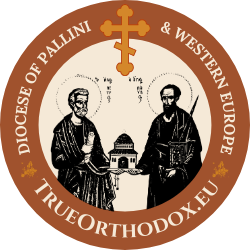
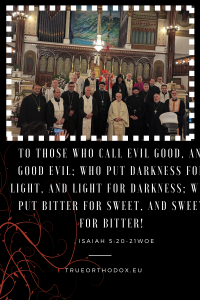
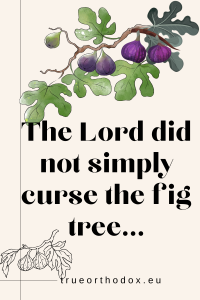

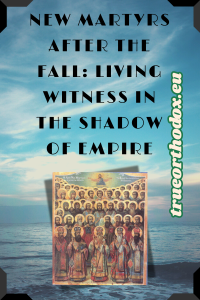
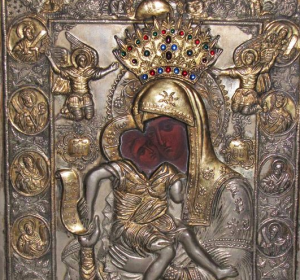
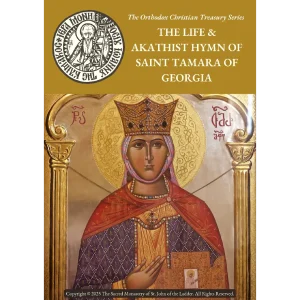
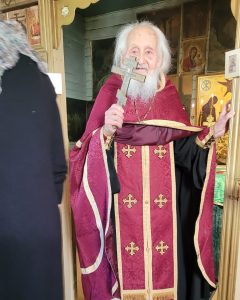
Thank you for your explanation, which includes examples and references as far back as the Book of Numbers. The last True Orthodox monarchies fell in the 1940s and we face increasing chaos until their restoration following the coming World War. With the penetration of agents of state authorities and anti-authorities, especially their intelligence services, and those sent over by their linked Pseudo-Churches adding to this. It is hard to imagine some of these agents are not involved here in their characteristic hidden way.
On p.11, Protopresbyter Victor Melehov says, “Collegiality must not be mistaken for conciliarity – sobornost”. Can anyone explain what distinctions he is making between these two words. I cannot figure it out.
Thank you.
Pater Iov
Dear Father,
Protopresbyter Victor here is stressing that “group rule” is not the same as conciliarity. Conciliarity means that the decision is made in a council of bishops at Synod following the Holy Canons.